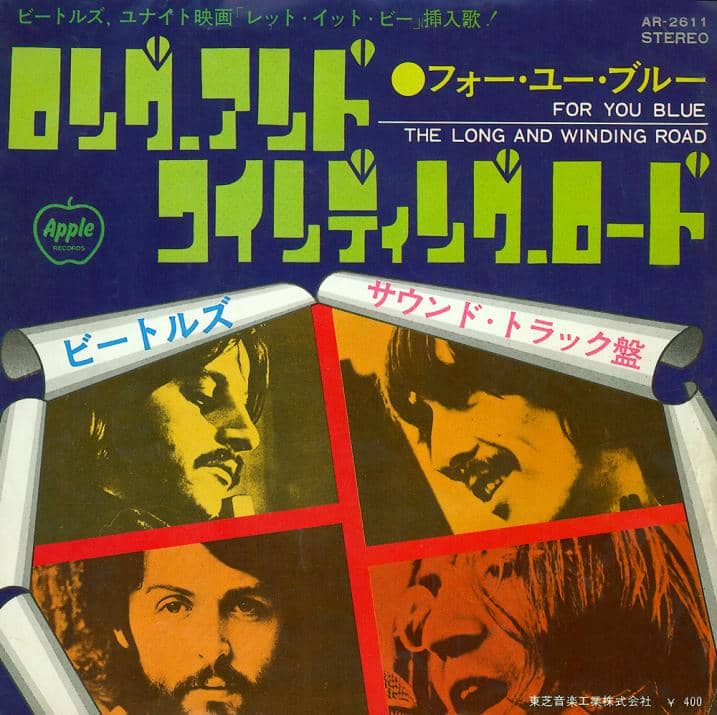The Long And Winding Road is a track on the Let It Be album, and was released as a single in the US, where it became the Beatles last number one. It’s appearance at number 141 in this ranking looks like another anomaly in my system. It is a poignant song, expressing both regret and optimism. It could perhaps have outshone Let It Be and might have been among McCartney’s strongest piano ballads, but the none of the several Beatles versions that have been released quite deliver on its promise.
If ever there was a song which summed up the fraught nature of The Beatles’ final months, it was ‘The Long And Winding Road’.
 Continue reading on Beatles Bible →
Continue reading on Beatles Bible →The story of the song has been somewhat overshadowed by the dispute over its production which was one of the factors that fed into the tensions around the break up of the band. The Beatles had appointed a new manager, Allen Klein, based on a three-to-one vote (McCartney didn’t want Klein preferring to be represented by his soon to be father-in-law, entertainment lawyer Lee Eastman). Lennon had told Klein that he planned to leave the group, and seeing the break-up on the near horizon Klein scrambled to prepare the rather shambolic Let It Be recordings for release.
At this stage the band were at loggerheads. The material had been recorded in an intentionally stripped-down format for the Get Back/Let It Be project (originally produced by George Martin with Glyn Johns having a significant engineering role), but these were not felt to be usable in the raw form. Lennon and Harrison brought in famed American producer Phil Spector (McCartney did not approve). The Long And Winding Road bore the brunt of his heavy-handed approach, with layers of orchestration and choir overdubbed. McCartney, Martin and Johns were all appalled, and many critics have given negative opinions of the results:
“He’s rendered ‘The Long and Winding Road’ … virtually unlistenable with hideously cloying strings and a ridiculous choir that serve only to accentuate the listlessness of Paul’s vocal and the song’s potential for further mutilation at the hands of the countless schlock-mongers who will undoubtedly trip all over one another in their haste to cover it.” Rolling Stone reviewer John Mendelsohn (cited in Wikipedia)
The alterations Spector made formed part of McCartney’s case in legal action he took to dissolve the Beatles’ partnership, effectively suing the other three Beatles, a low point from which their relationship never quite recovered.
Much later McCartney gained permission from the Harrison, Starr and from Lennon’s estate to produce a stripped-down mix of the album as had originally been intended (Let It Be… Naked). A raw take can also be heard on the Anthology collection. With a recent Super Deluxe release of Let It Be, Glyn Johns’ original mix is also now available, as is a new 2021 mix which was made for the re-release of the Beatles Blue Album compilation. To my ear Glyn Johns’ version (ironically the first created) is perhaps the best.
Unfortunately all the stripped-down versions are at least slightly flawed – the Beatles never quite recorded a suitably strong take. John Lennon played bass on this track, not his best instrument, and several critics have pointed out mistakes. At this stage of the project the Beatles were essentially rehearsing. In my view the Spector overdubs do a reasonable job of covering the rougher edges up, but the overall effect is too artificially sentimental.
Even though, in my view, the Beatles never captured a definitive recording, the song itself seems very promising. I particularly like the chord that comes at the end of the opening phrase (highlighted here):

This is an Ab major with Bb in the bass – sort of optimistic but simultaneously wistful, setting the tone for the whole song.
McCartney said he had Ray Charles in mind when writing the song.

Charles, who eventually covered The Long And Winding Road, was a huge influence on the Beatles (and so many of their contemporaries). His unique sound crossed every boundary between jazz, rhythm and blues, soul, rock and later even country. In the Beatles’ early days they had regularly performed his up-tempo “What’d I Say” live, and seeing Ringo nail the drum part had played a big part in securing his place in the band.
In the Get Back documentary you can hear the Beatles talk about Charles and his backing singers the Raelettes when thinking about arrangements. They later brought in Ray Charles’ organ player Billy Preston (an old friend from their time in Hamburg), who transformed the Get Back/Let It Be sessions and later played on Abbey Road. He is heard playing on several versions (but not the official Spector release) of The Long And Winding Road.
Both McCartney and Harrison drew on Charles as inspiration for songs and arrangements written in this period, with Harrison’s Something also being written with Ray Charles sound in mind.

